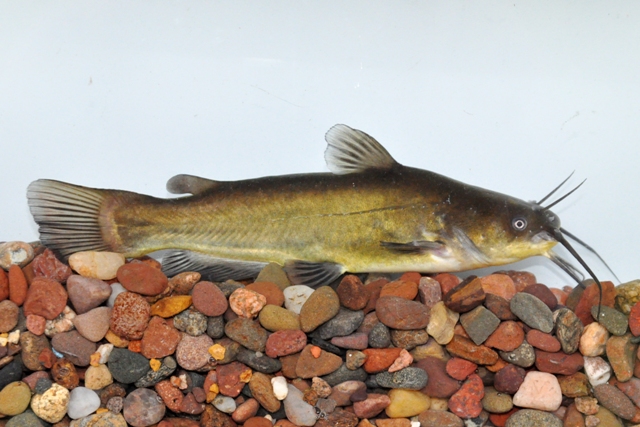Black Bullhead
(Ameiurus melas )

Black bullheads are the most tolerant of turbid (murky) water and the smallest of Ohio's three bullhead species. They often hybridize with brown bullheads and in many reservoirs the hybrids are more common than either parent species.
Description
The black bullhead has a straight edge to the back of the pectoral spines, and a square tail. They have a band just in front of the tail that is light colored compared to the rest of their body which is usually a dark brown to black color with a white or cream colored belly. They have a shorter anal fin (17-21 rays) than the brown or yellow bullhead. The base of their four chin barbels are black or brown and can be entirely black or brown.
Habitat and Habits
The black bullhead is most common in shallow turbid (muddy) waters with little or no aquatic vegetation. Historically they were only found in the Ohio River drainage primarily in larger slow moving streams and rivers. During the early history of the U.S. extensive canal systems were built connecting the Ohio River and Lake Erie drainages. This and intentional introductions have allowed the black bullhead to become well distributed in the Lake Erie drainage as well. As a result black and brown bullheads, which historically would not have encountered one another, have hybridized so often that it is difficult to find pure strain fish of either species in much of the state.
Reproduction and Care of the Young
Bullheads build nests in natural cavities or make saucer shaped depressions near submerged cover, such as tree roots or sunken logs. Females usually deposit between 300 to 10,000 eggs in the nest. At least one of the parents remains to continually fan and guard the nest. After hatching, the young swim around in a dense ball and are guarded by the male for several weeks.